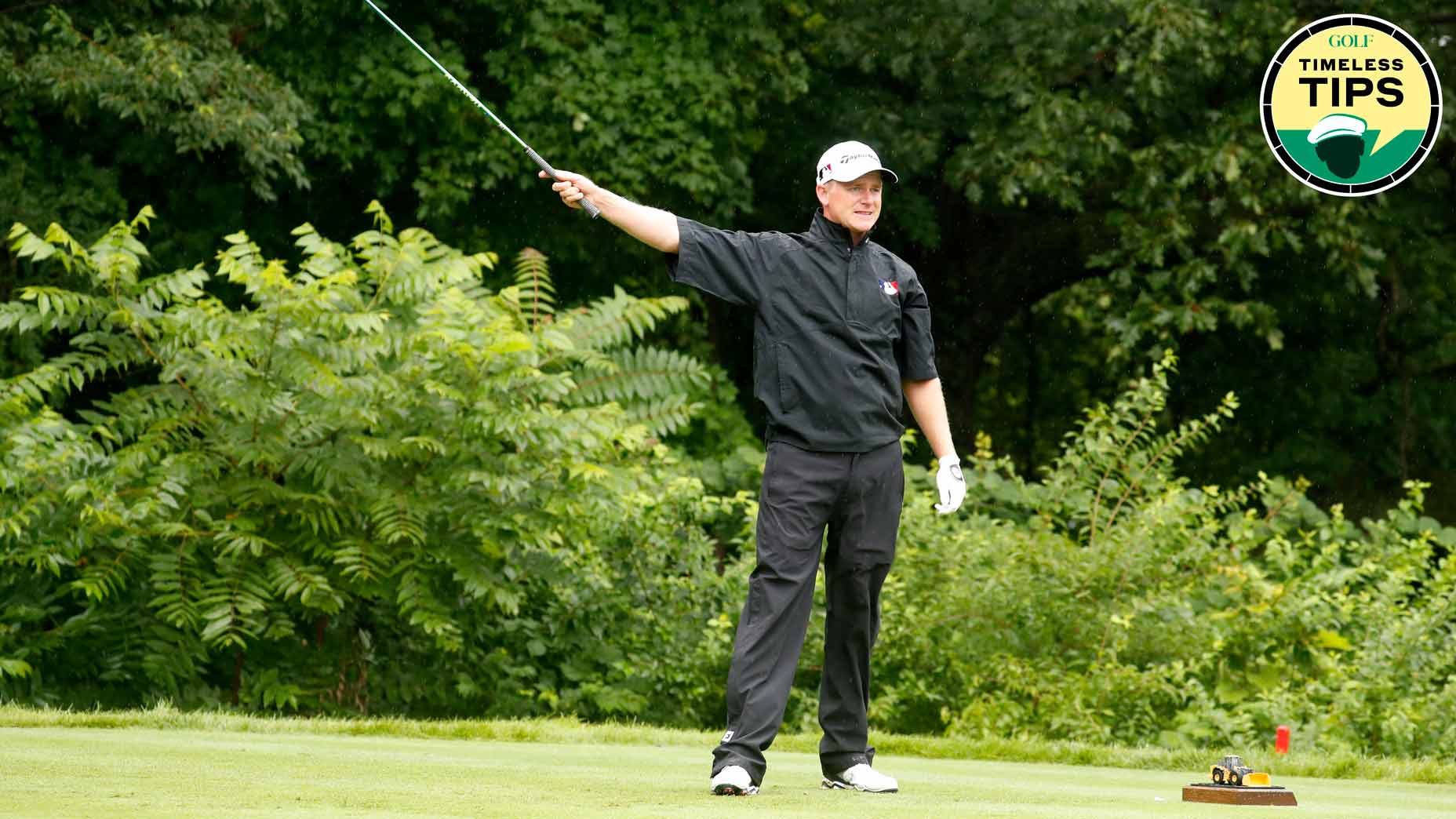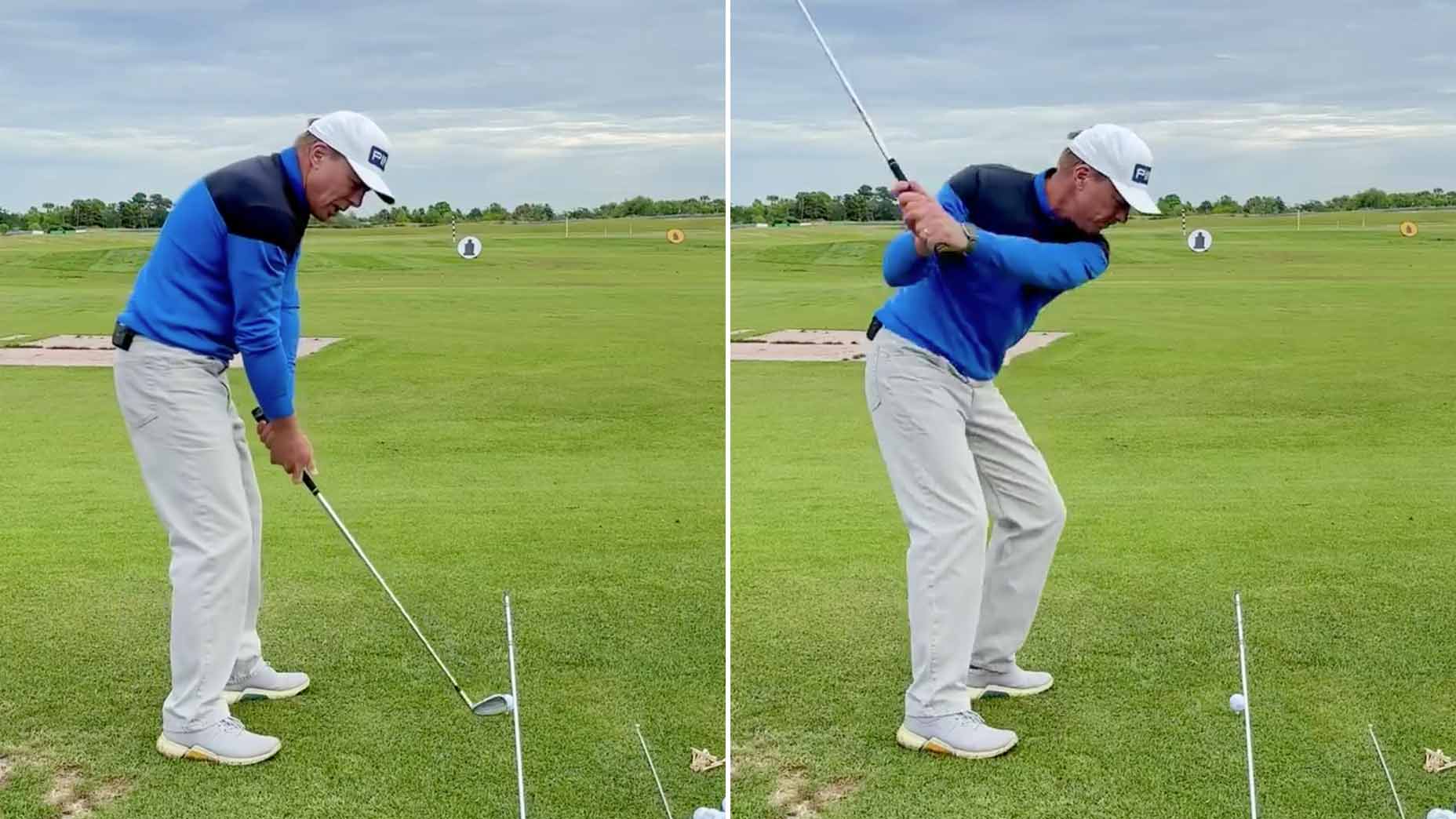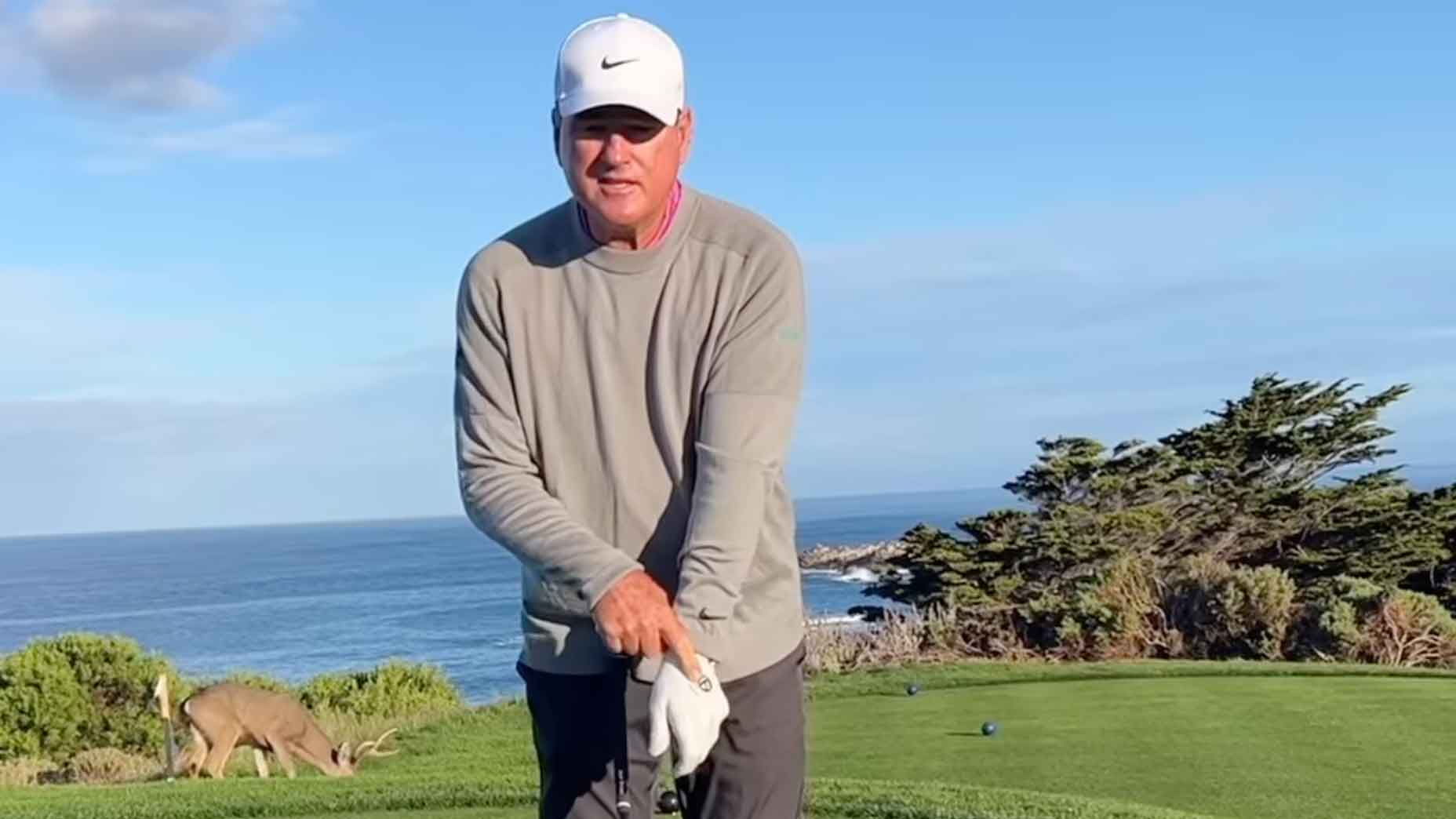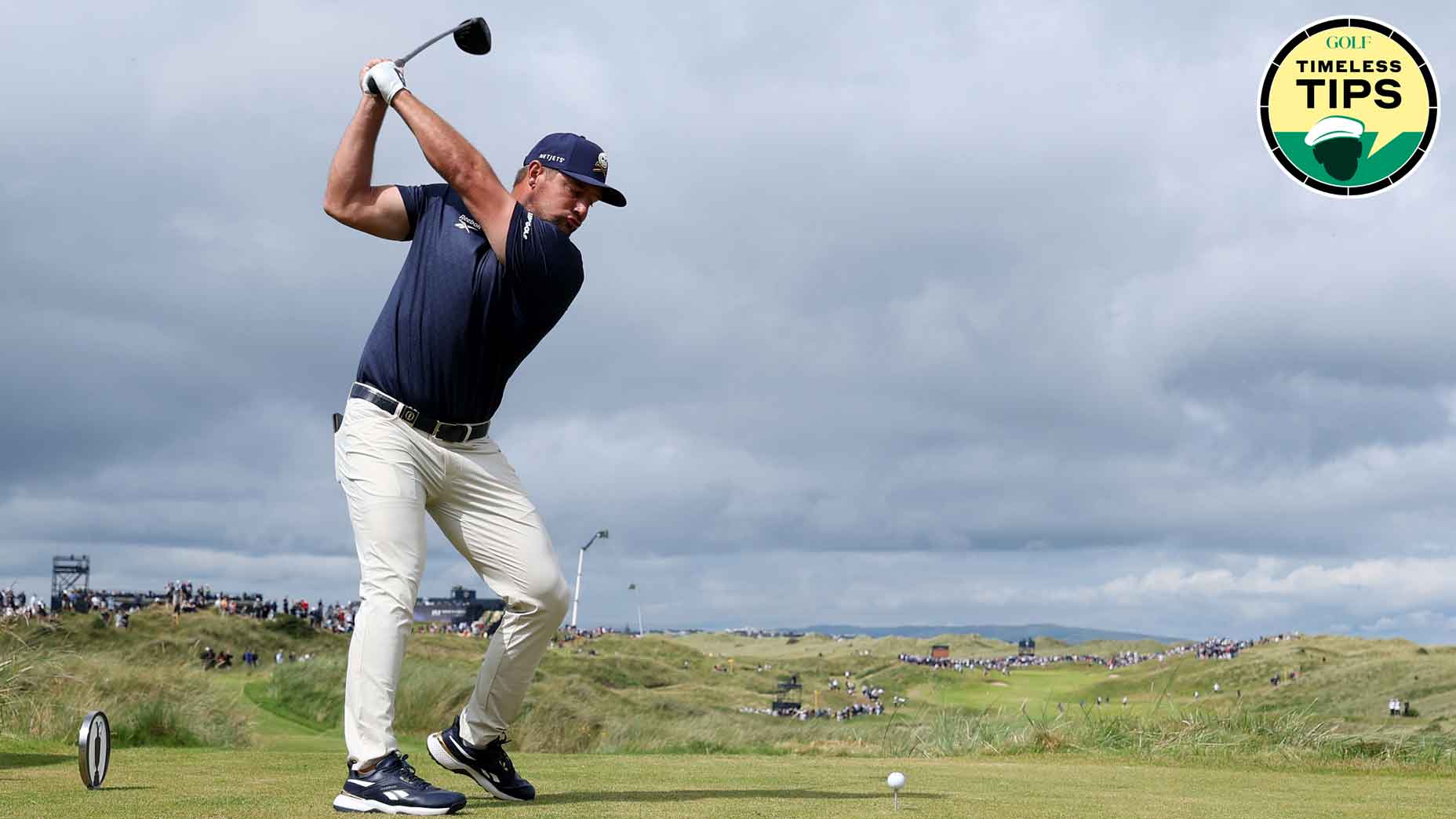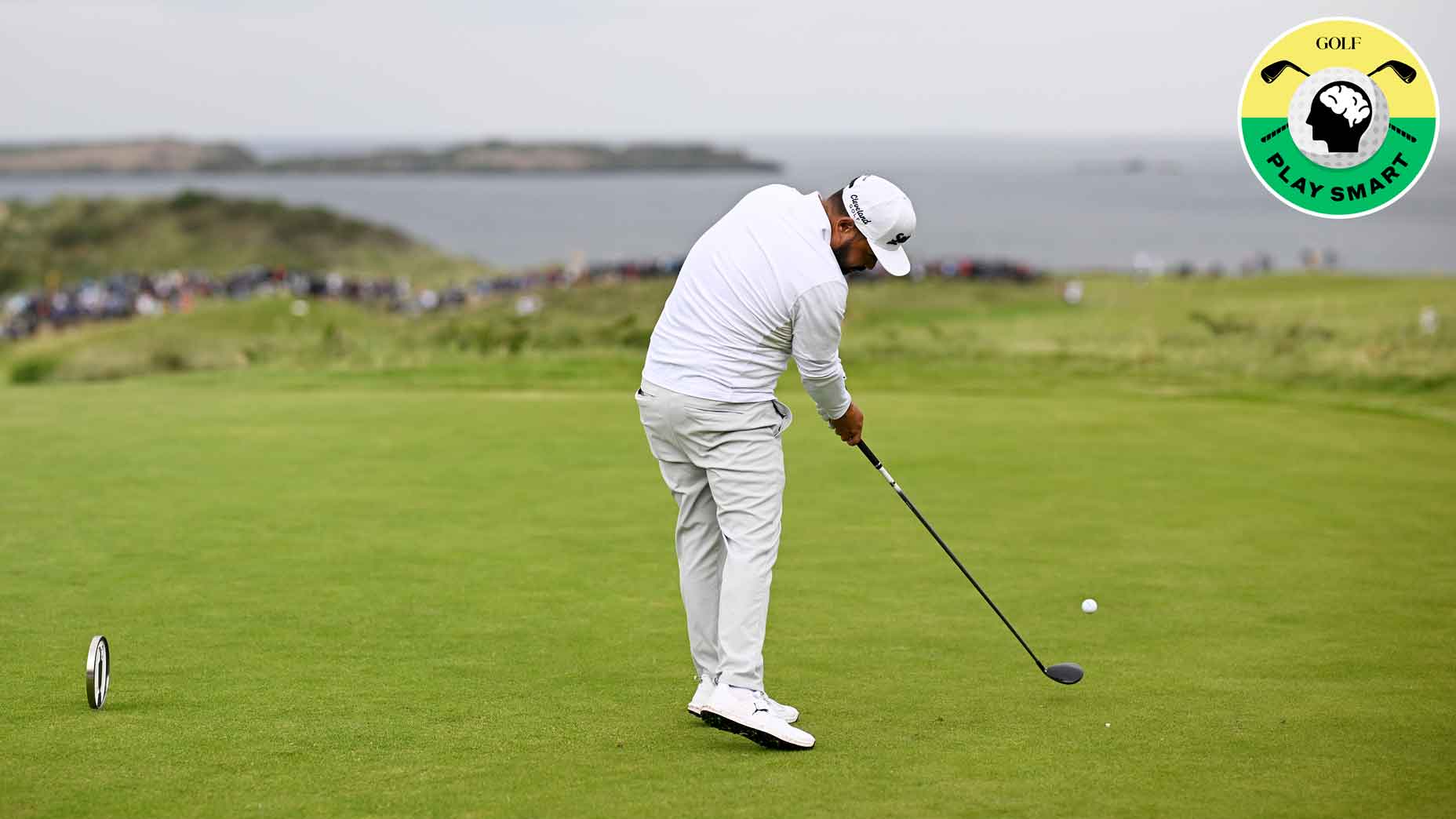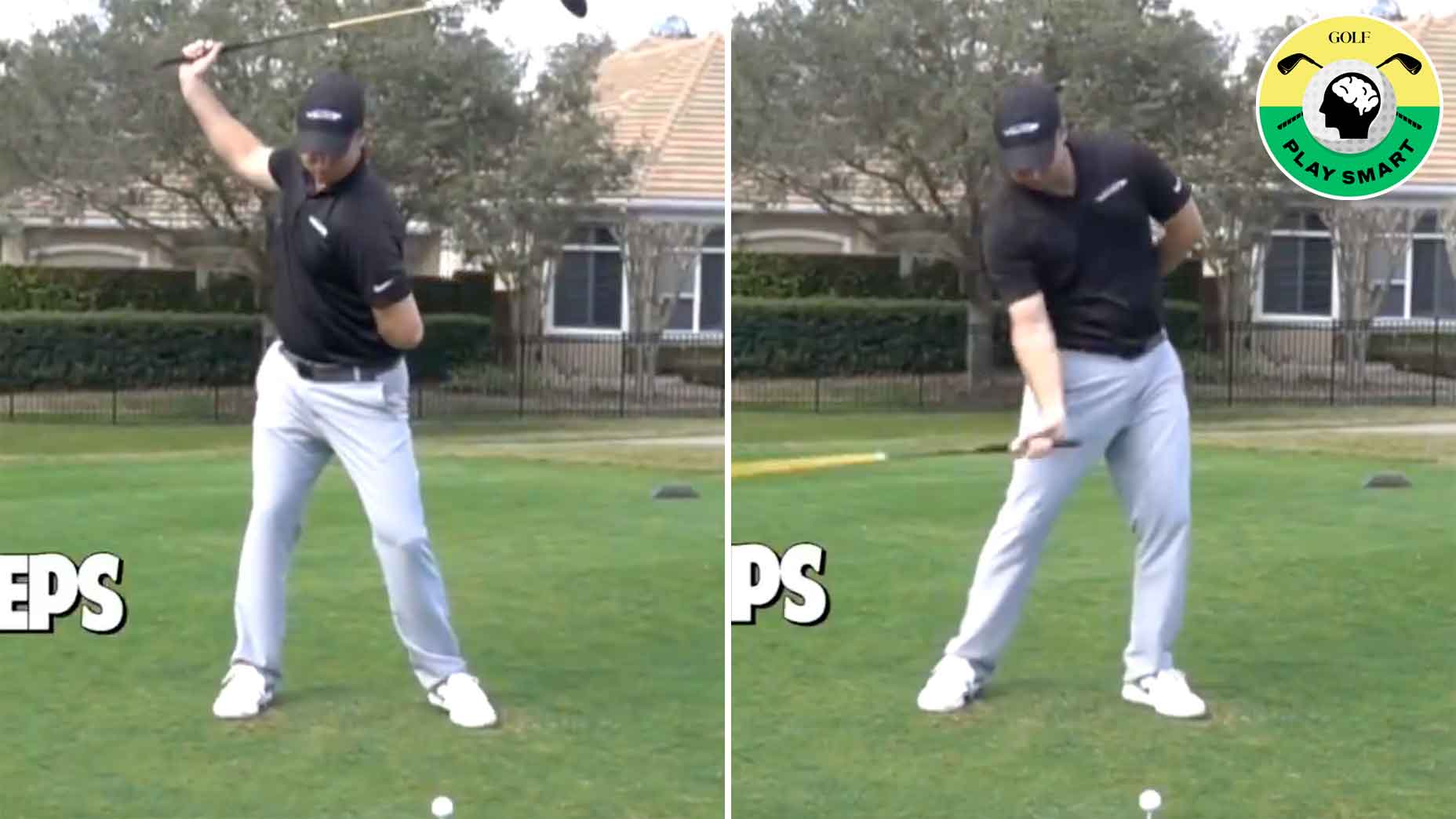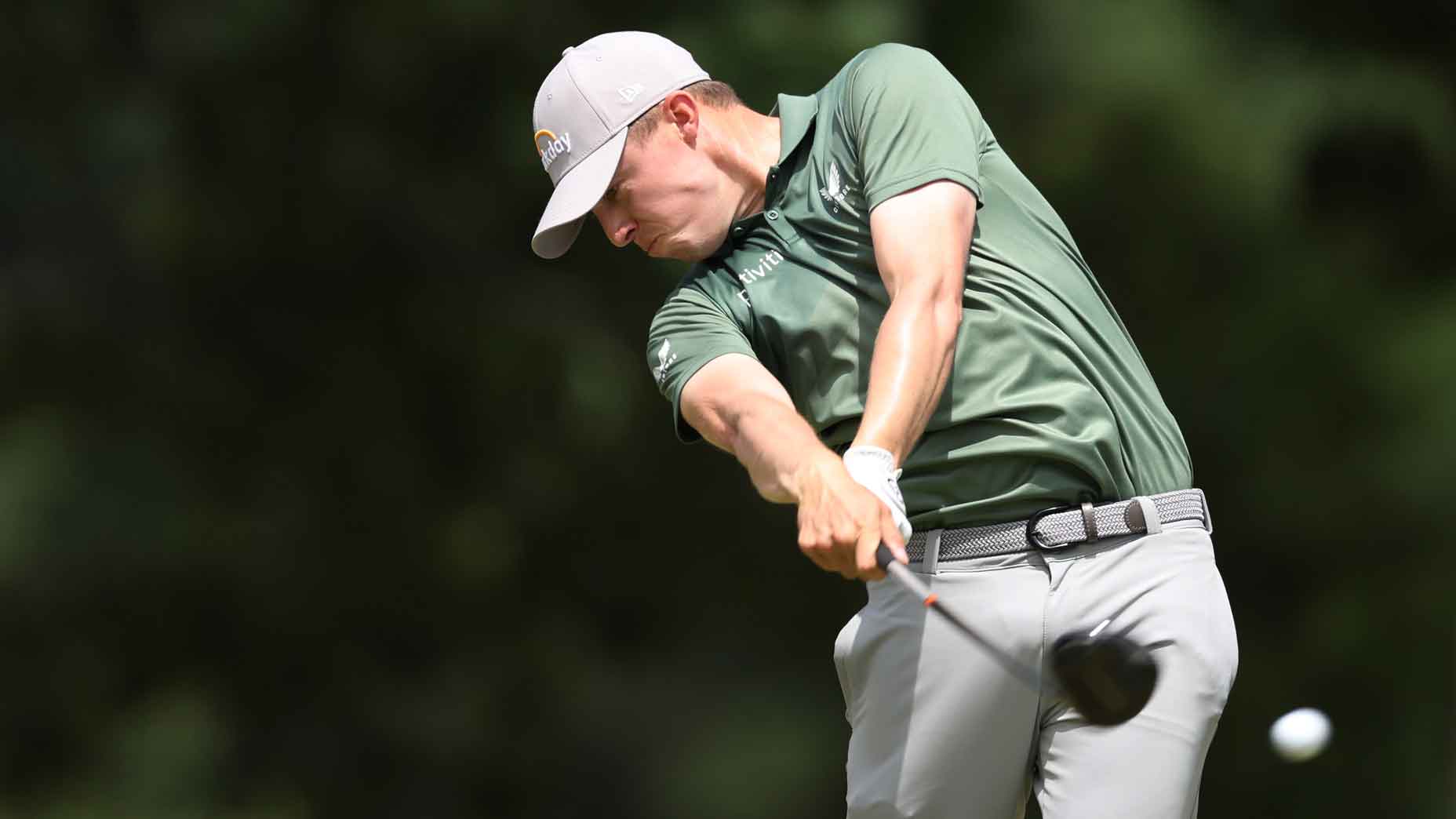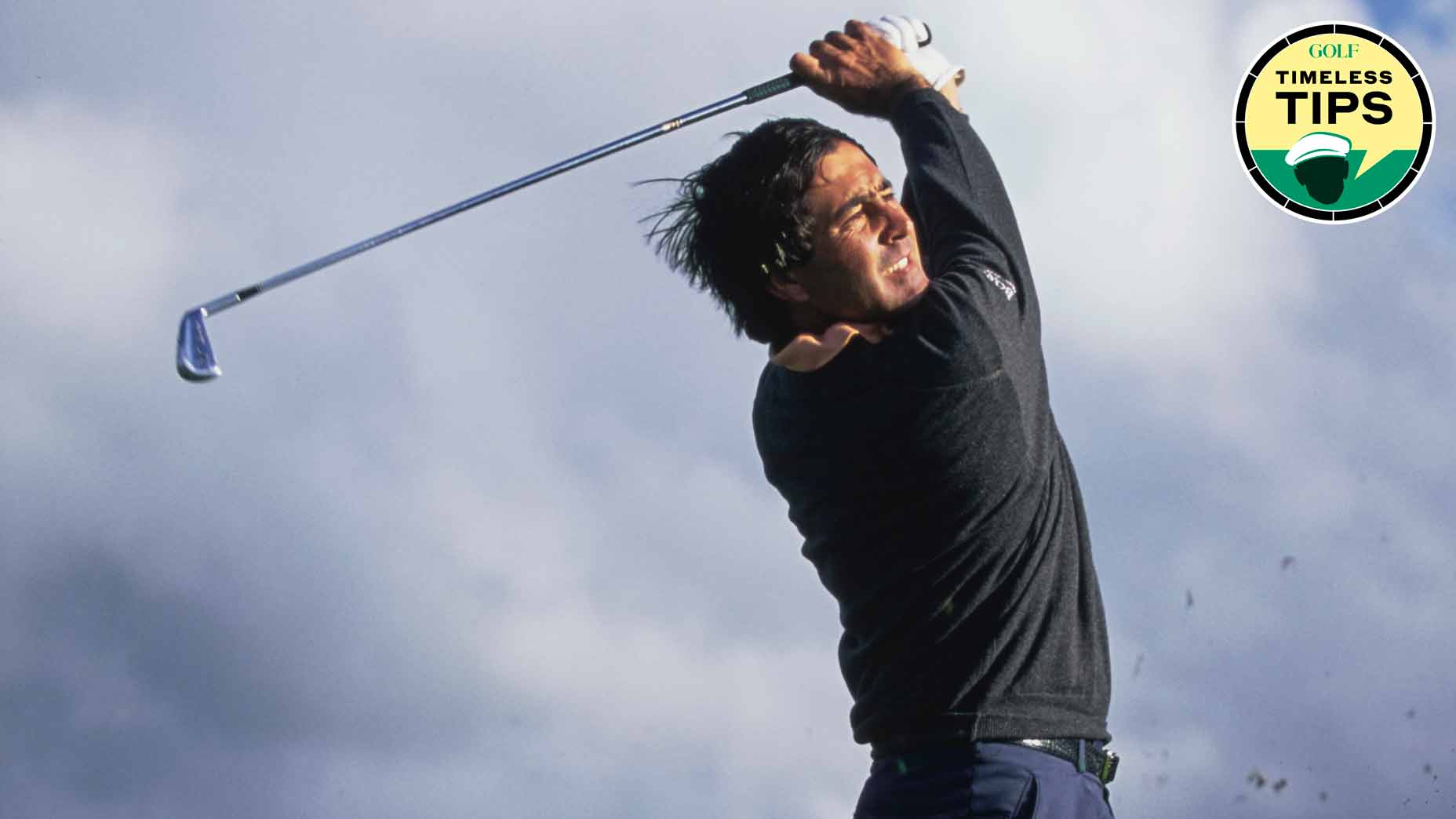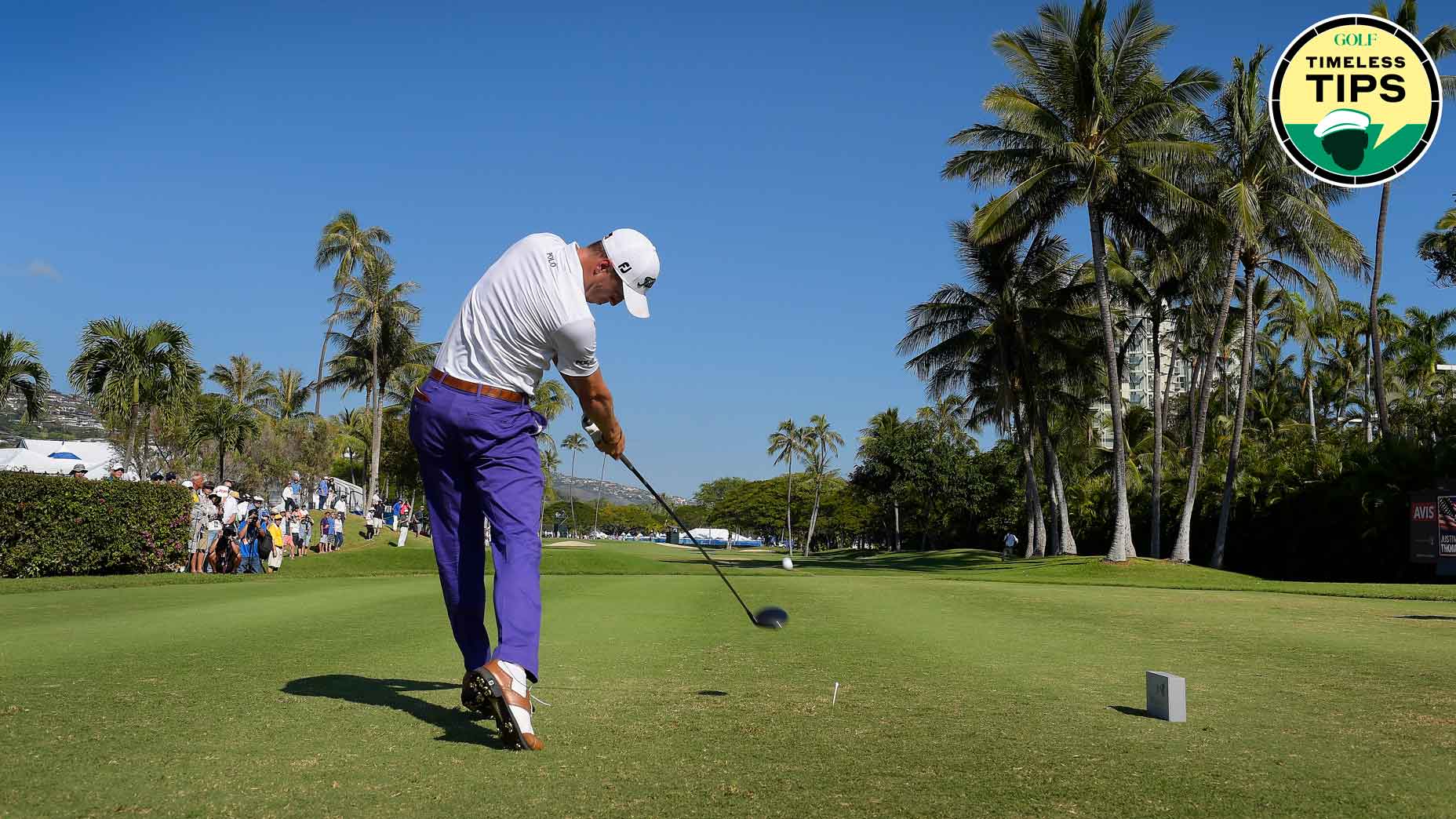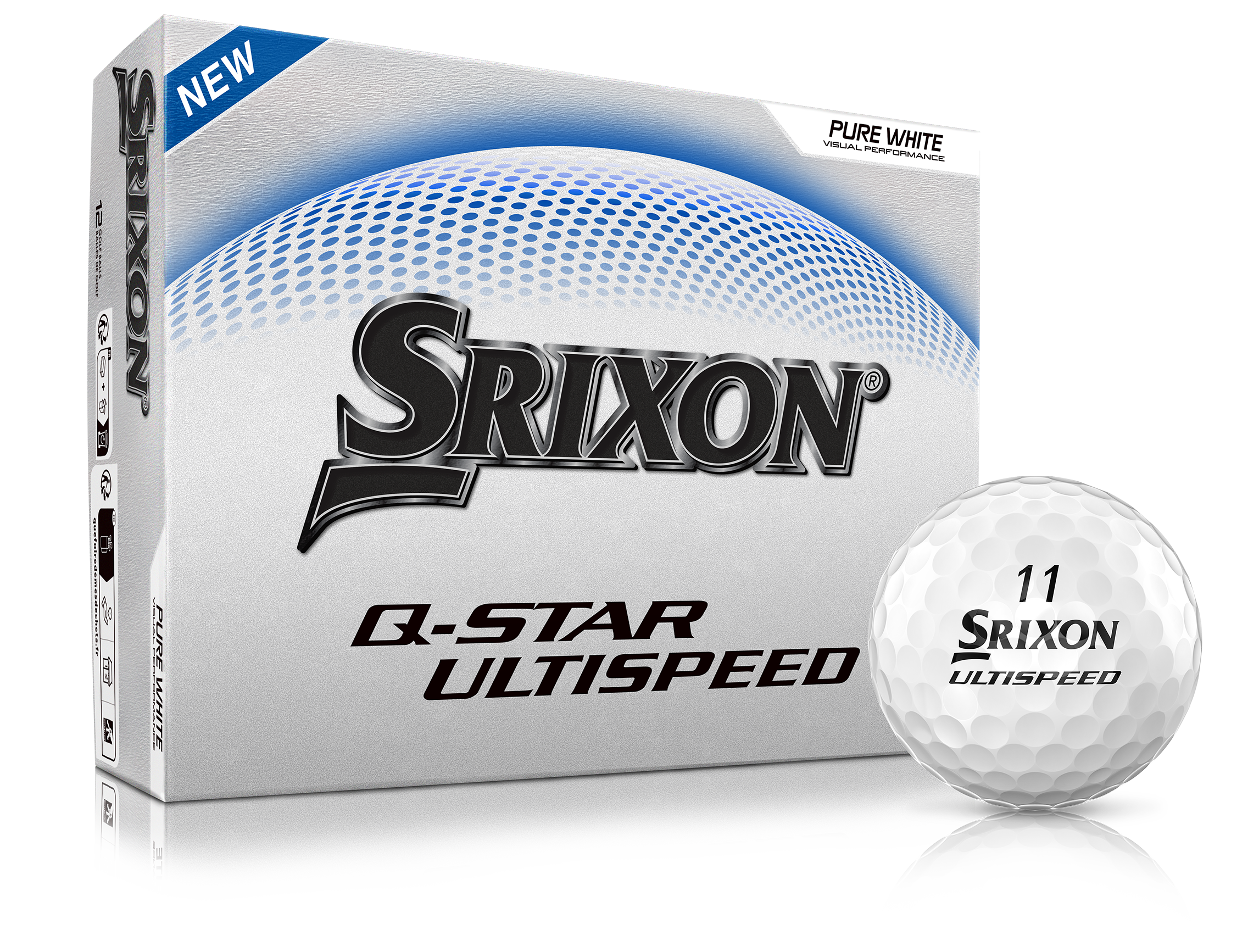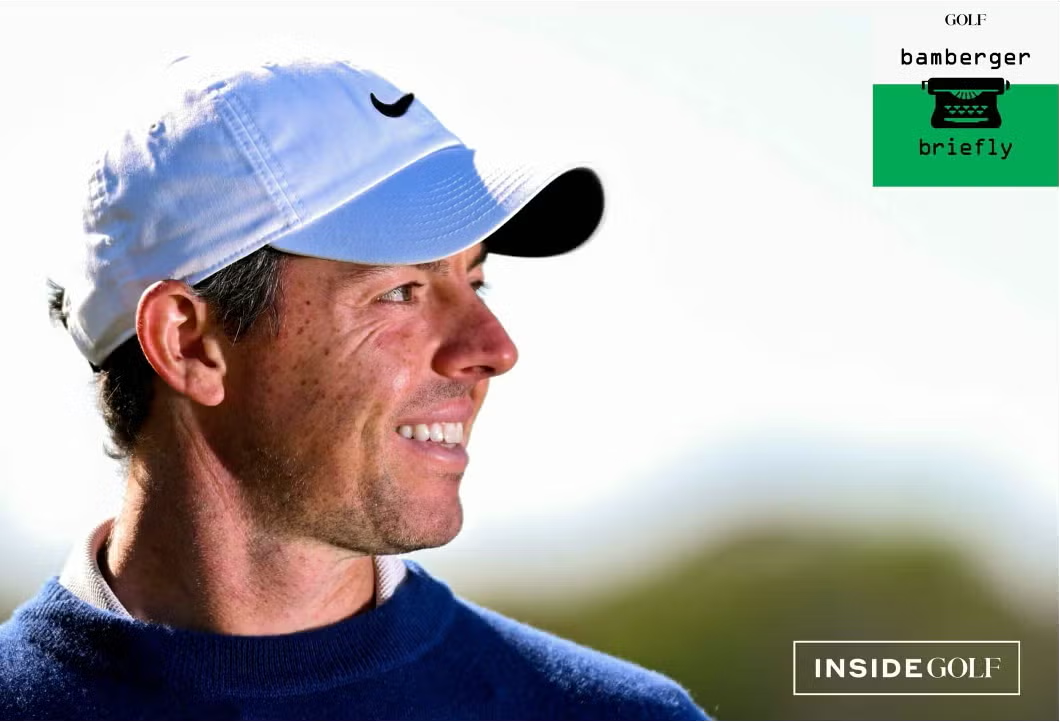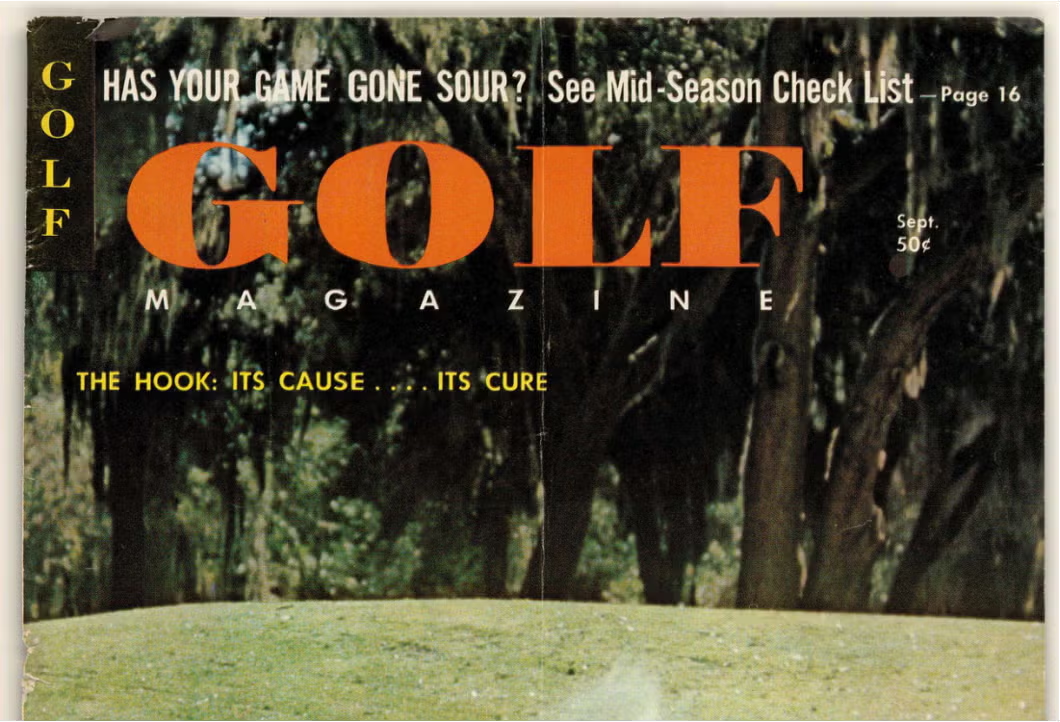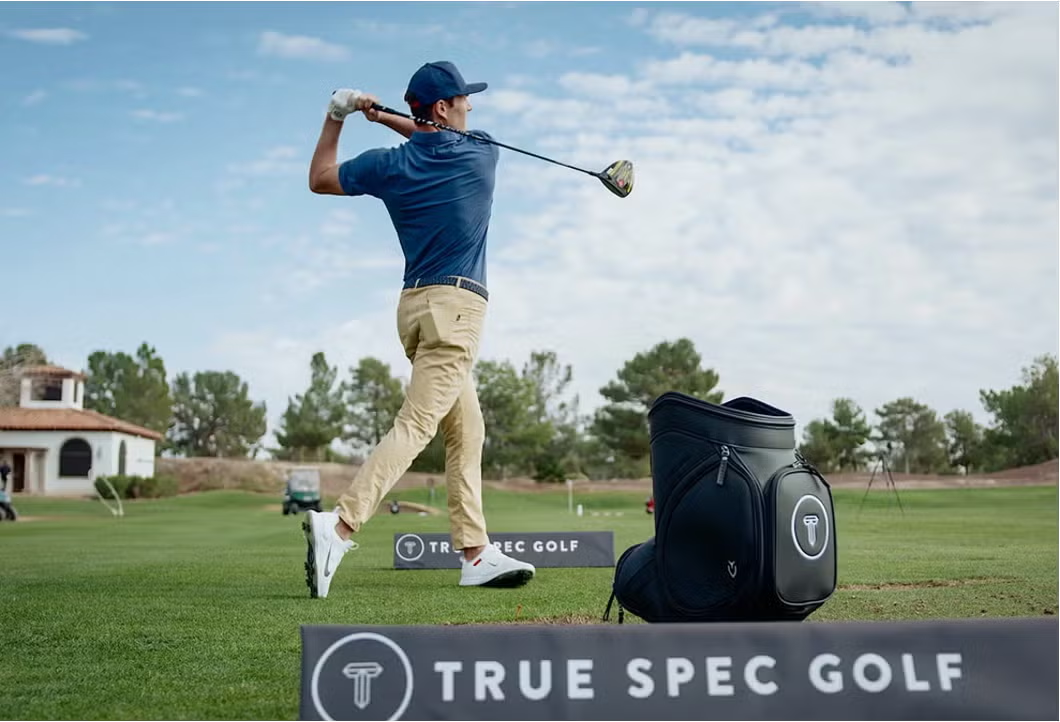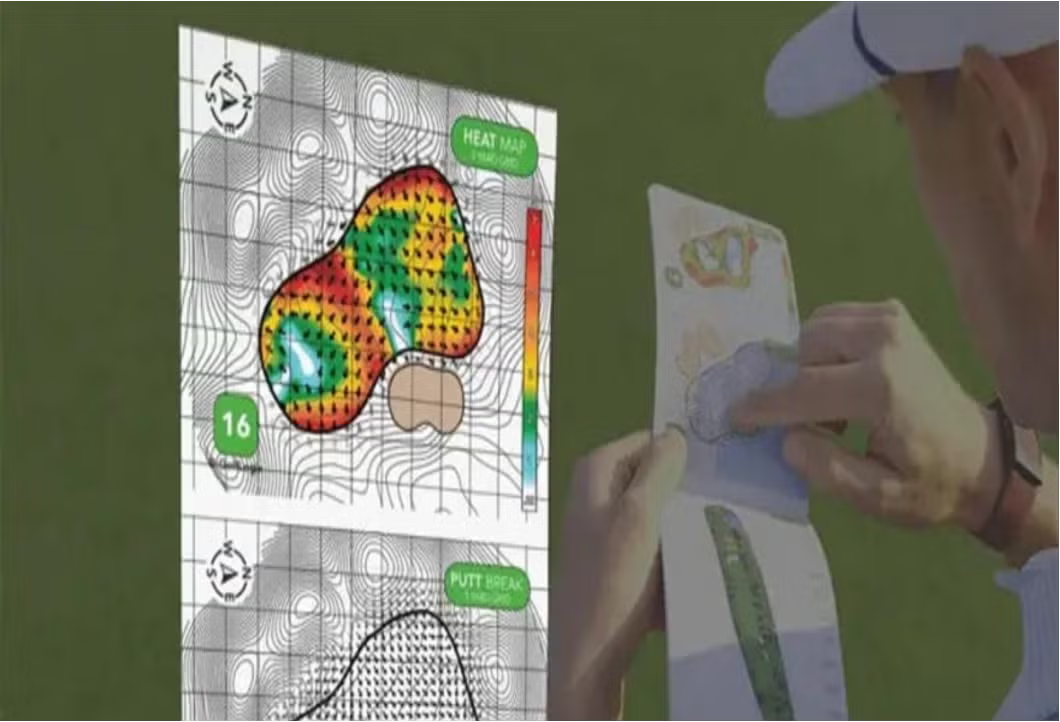Golf instruction is ever-evolving, but the best advice stands the test of time. In GOLF.com’s new series, Timeless Tips, we’re highlighting some of the greatest advice teachers and players have dispensed in the pages of GOLF Magazine. Today we have a few tips on curing slices from our August 1987 issue. For unlimited access to the full GOLF Magazine digital archive, join InsideGOLF today; you’ll enjoy $140 of value for only $39.99/year.
Ah the dreaded slice. It’s a ball flight that has plagued almost every golfer during their time playing this game and has driven many of them insane.
Having a persistent slice can make golf a pretty grueling exercise. Not only is the slice difficult to control, it’s also got very little power. When you’re coming over the top and cutting across the ball, it keeps you from generating much power.
With how prevalent the slice is in the recreational game, there are tons of tips and tricks out there claiming they can fix it. But like most things in golf, there’s no one-size-fits-all remedy. There are different types of slices, and different causes for each, meaning there are different ways you should go about patching things up.
That’s where we come in. Back in 1987, we at GOLF Magazine ran a feature on the three different types of slices — and the fix for each. Check out below for more.
3 types of slices
“Banana ball.” Not exactly the words a golfer wants to hear as he finishes his swing. The player who hits the “weakest shot in golf” is sure to pay the price with the loss of both distance and control. The slice rears its ugly head in three shapes: pull slice, push slice and straight slice, the names taken from the initial path of the ball; the direction it flies before making a sharp right turn. Although each slice is different, their ingredients are much the same: In the text below, we will help you identify them and then help you correct them.
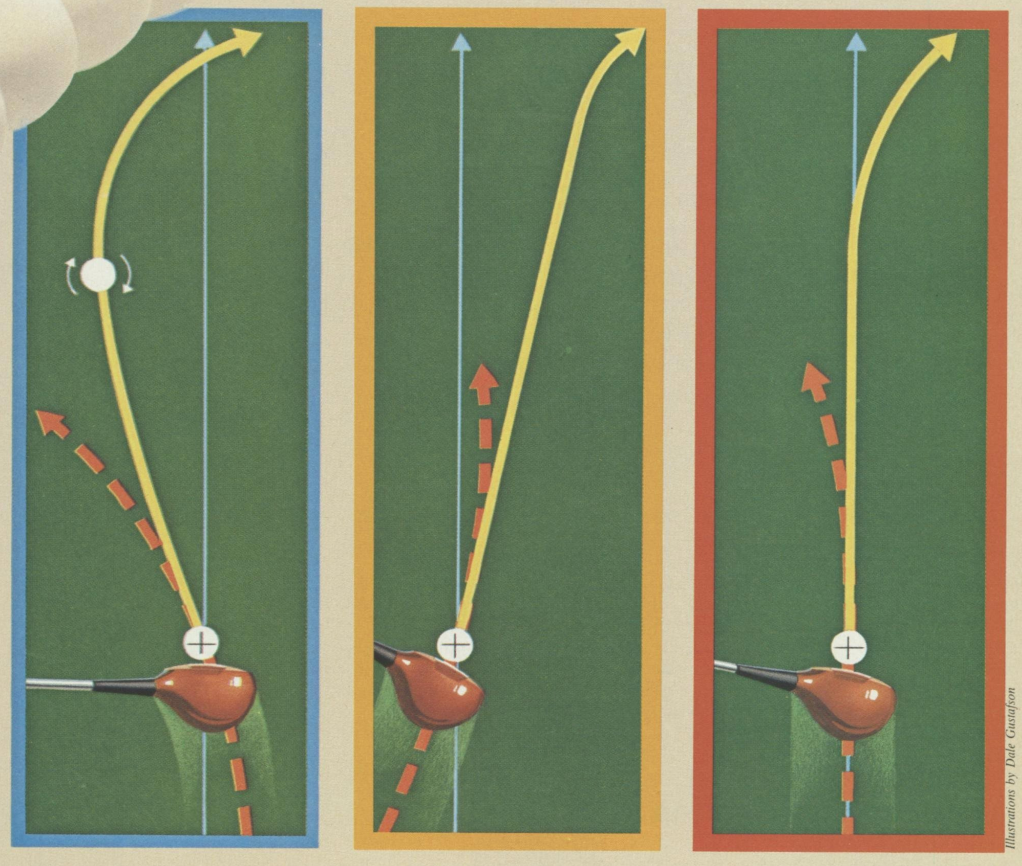
Pull slice
The pull slice starts to the left of the target line, then curves sharply to the right. The initial direction of the shot is determined by a downswing path that approaches the ball from outside to inside the target line. This cutting-across action, combined with an open clubface at impact, magnifies the severity of the left-to-right curve, the most common slice among weekend players.
CAUSE 1: Open alignment at address, plus a weak grip. Although the player’s swing path is sound, setting up open causes the club to swing down on an outside-in path. A weak grip fails to square the clubface at impact.
CURE: Strengthen your grip and set up squarely at address. Strengthening the grip allows the hands to square the clubface to the ball at impact. Setting up squarely brings the club down on the proper swing path. Many players step up to the ball properly aligned to the target line, then waggle themselves into an open position without realizing it. Have a friend stand behind you or use a pointer club on the practice tee to help determine whether you’re turned open while swinging. Pay special attention to the shoulders — often the feet and hips are square but the shoulders point left of the target.
Use this simple drill to cure your ugly slice for goodBy: Zephyr Melton
CAUSE 2: Hands behind ball at address, plus a weak grip. The clubhead trails the hands and is forced into an outside path during the takeaway, leading to an outside-in approach. The weak grip fails to square the clubface.
CURE: Strengthen your grip and position hands ahead of ball at address. The open angle of the clubface at impact is due primarily to a weak grip. Turn both hands to the right and into a stronger position. To correct the outside-in swing path, set up with your hands ahead of the ball. This will create a straight line running from the tip of your left shoulder through the left arm, into the hands and down the clubhead. Maintaining this line at the start of the takeaway forces the shoulders to turn, which brings the club back on the proper inside path and sets it in position at the top of the backswing to start down on a good downswing path.
CAUSE 3: Extremely weak grip. Besides failing to square the clubface at impact, the dominant position of the right hand on top of the club will force the club on an outside-in path if the player tries to keep the clubface square to the target line while going back.
CURE: Strengthen your grip. If you try to take the club back on an inside swing path while the right hand is turned far left, the clubface will fan open in the backswing. This opening action will feel unnatural, so you may unconsciously try to keep the clubface square during the takeaway, which forces the club onto an outside path. Strengthen your grip by turning the hands to the right: The thumbs should be on top of the club or just to the right in a more neutral, side-by-side position. This makes it possible to take the club back squarely, on an inside path and set it in a square position at the top.
CAUSE 4: Shoulders start downswing instead of hips, plus a weak grip. This is the most common combination for _ pull-slicing, occurring primarily among beginning and high-handicap players. In an attempt to swing down fast and with power, they attack with the upper body, hands and arms. This causes a spinning action of the shoulders, which forces the clubhead into an outside-in path.
CURE: Speed up lower body action and strengthen your grip. The key here is in the mind, for you must concentrate on starting the downswing with the lower body before moving the hands. Don’t try slowing down the upper-body motion; that usually results in a deceleration of the club through impact, a sure shot-wrecker. Start the downswing with a strong lateral move of the hips to the left and shift the weight from the right foot to the left. So long as the lower body moves before the upper body, the hands won’t get too far. You can swing the hands and arms as_ hard and fast as you like without fear of the shoulders spinning out of control. If this is your problem, you also may find that your head moves toward the target during the downswing. Correct this by making an effort to keep your head behind the ball through impact.
Push slice
The push slice begins right of the target line and continues curving farther right. The initial direction of this shot follows from a downswing path that approaches the ball from inside to outside the target line. The left-to-right curve is caused by an open clubface at impact. Of the three slices, this is the most damaging since the ball usually finishes farthest from the intended target.
CAUSE 1: Crossing the line (clubshaft points right of the target line at the top), plus a weak grip. On the downswing, the right arm gets trapped behind the body, forcing an inside-out swing path. Weak grip fails to square clubface to the ball at impact.
CURE: Firm up grip pressure and strengthen your grip. A key to bringing the club down on the correct path is setting the shaft parallel to the target line at the top of the backswing. Light grip pressure leads to sloppy wrist action, allowing the club to waver off line. Firming up grip pressure helps eliminate excess motion of the wrists. Check that the back of the left hand and left wrist are square with the back of the left forearm at the top. If they are, and the shoulders are square at address, then the club is parallel to the target line.
CAUSE 2: Extremely strong grip. The “underneath” position of the right hand makes it easy for the club to be taken away too far inside. Also, with the hands turned so far right, releasing them results in a closed clubface at impact, so the player compensates by blocking their release totally, causing an open face instead.
3 ways to *finally* fix your chronic slice, according to a Top 100 TeacherBy: Nick Dimengo
CURE: Weaken your grip. If the thumbs are so far to the right that they’re at 2 o’clock or past, the grip is too strong. Weaken it by turning both hands to the left until the thumbs are more on top of the shaft. Your hands and forearms should be facing each other, giving the right arm a more active role and keeping the club from swinging back too far to the inside. Putting the hands side by side also allows the wrists to cock naturally during the backswing and release on the downswing, squaring the clubface to the ball through the hitting zone.
CAUSE 3: Wristy, inside takeaway plus a weak grip. Relaxing the hands and arms too much may result in a quick wrist break and a flipping action of the club well inside the desired backswing path, causing an inside-out downswing.
CURE: Firm up your grip pressure and strengthen your grip. Again, wrist action has to be tightened up, especially at the start of the backswing. Firming your pressure on the club serves to tighten the muscles in the wrists and forearms, helping eliminate excess movement and keeping the club on a straight, even path going back and coming through. Concentrate on keeping the wrists firm for the first two feet of the takeaway before allowing them to cock naturally.
CAUSE 4: Overactive lower body, plus a weak grip. These common causes of push slicing usually result from trying to get too much lower-body action into the swing. A “hip-spin” starts the downswing, causing the body to open up too much at impact. This forces the hands back to the inside, which causes an inside-out downswing path.
CURE: Slow down your lower body and strengthen your grip. Your downswing should start with a lateral shift, instead of a spinning out, of the hips. Good lowerbody action allows the hips to open up naturally after contact and into the follow-through, rather than forcing them open to start the downswing. Practice slowly sliding your weight straight toward the target, moving it from the inside of the right foot at the top to the inside of the left foot to lower start the downswing. This keeps the lower body from getting too far out in front and gives your hands and arms a chance to catch up before impact.
Straight slice
The straight slice starts straight down the target line, then curves to the right. The initial flight of this shot is the result of a proper, straight path of the clubhead on the downswing, but the open face at impact imparts the spin that causes the slice. This is the easiest of the three slices to fix, because only the clubface angle needs correcting to get the ball straight to its intended target.
CAUSE 1: Blocking. Consciously or unconsciously preventing the hands from releasing through the hitting zone, resulting in an open clubface at impact.
CURE: Learn proper hand release. You must learn what a correct release feels like. Hold a 5-iron in your left hand, relax the wrist and make rhythmic half-swings. Don’t guide the clubhead — let it move on its own natural path. The toe of the club should point to the sky when even with the hip on the follow-through. This indicates that the left hand is gradually turning over through impact and squaring the clubface to the ball. Once you’ve gotten the feel of it, put your right hand lightly on the club and continue making half-swings, slowly increasing up to a full swing. Perform this drill regularly, rehearsing it once or twice before every shot. Soon you’ll be releasing automatically with every club on every swing.
CAUSE 2: Left arm stiff at impact. Keeping the left arm too firm through impact prevents the hands from releasing and results in an open clubface.
Lee Trevino has an easy swing adjustment to fix your sliceBy: Zephyr Melton
CURE: Relax your left arm and extend your right into impact. The “stiff left arm” is a rule often carried to the extreme. On the backswing, it should remain fairly straight while the right arm folds to the side. Through impact, the right arm should extend straight through impact as the left arm folds. This allows the right hand to slowly roll over the left, squaring the clubface to the ball. To solve this problem, concentrate on straightening the right arm into the ball and letting the left arm fold, allowing the proper hand release to happen automatically.
CAUSE 3: Lack of body motion. An “arms only” swing usually results in a jerky action that is little more than a slapping of club to ball with little hand and wrist action, which leaves the clubface open at impact.
CURE: Incorporate hip and shoulder turn into the backswing to lengthen and smooth out the swing. If you’re an arms-only swinger, your motion has to be lengthened and smoothed out. You have to put the body’s big muscles to work by turning the hips and shoulders on the backswing to add rhythm and power to the downswing. This will help you swing the clubhead through the ball instead of punching at it, making it easier for the hands to freely release through impact. Thinking of turning your belt buckle directly away from your target is a good way to get both hips and shoulders turning. Once you do, you’ll not only be hitting the ball straighter, but longer as well.
CAUSE 4: Reverse weight shift. Here is the number-one cause of straight slicing, most often affecting beginners and senior golfers. Body weight incorrectly shifts to the left on the backswing, then to the right on the downswing. The lower body moves in the opposite direction of the clubhead, so the hips are closed at impact. This “pulling back” action of the lower body limits the release, causing an open clubface position at impact.
CURE: Proper weight transfer. Your weight transfer has to be correct to get the lower body and upper body moving in the same direction on the downswing for maximum clubhead speed and a square face at impact. A good way to get the feeling of good weight transfer is to take some practice swings with the feet together at address, and step into the downswing with the left foot the way baseball hitter does. As you follow through, lift your right foot off the ground to be sure all of your weight is off it and on the left. This is an excellent way to get to know where the weight should be at every point during the swing.
Latest In Instruction

Zephyr Melton
Golf.com Editor
Zephyr Melton is an assistant editor for GOLF.com where he spends his days blogging, producing and editing. Prior to joining the team at GOLF, he attended the University of Texas followed by stops with the Texas Golf Association, Team USA, the Green Bay Packers and the PGA Tour. He assists on all things instruction and covers amateur and women’s golf. He can be reached at zephyr_melton@golf.com.
